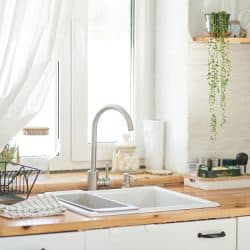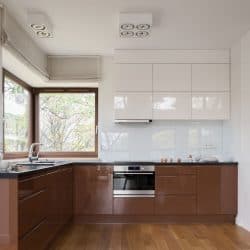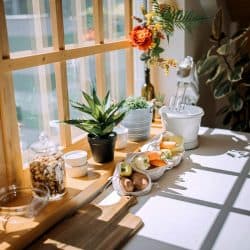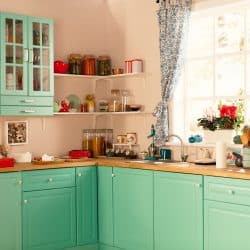In many 21st-century households, the kitchen has become a main hub of activity. Families use their kitchens as a space for cooking and as a prime spot for casual snacking, conversation, playing games, doing homework, and charging electronic devices.
As the popularity of the kitchen has surged, so has the attention that homeowners pay to its appearance and functionality. Most homeowners focus a great deal of attention on purchasing appliances, cabinets, countertops, and flooring. However, they often forget one important feature -- the window coverings.
Not only can the right window treatments add an important element to the decor in your kitchen, but they can also offer privacy, control the amount of light that enters the room, and increase your home's overall energy efficiency. Below, we'll describe eight different types of window treatments and explain how each contributes to the style and functionality of your kitchen. Keep reading to learn which is right for your kitchen!
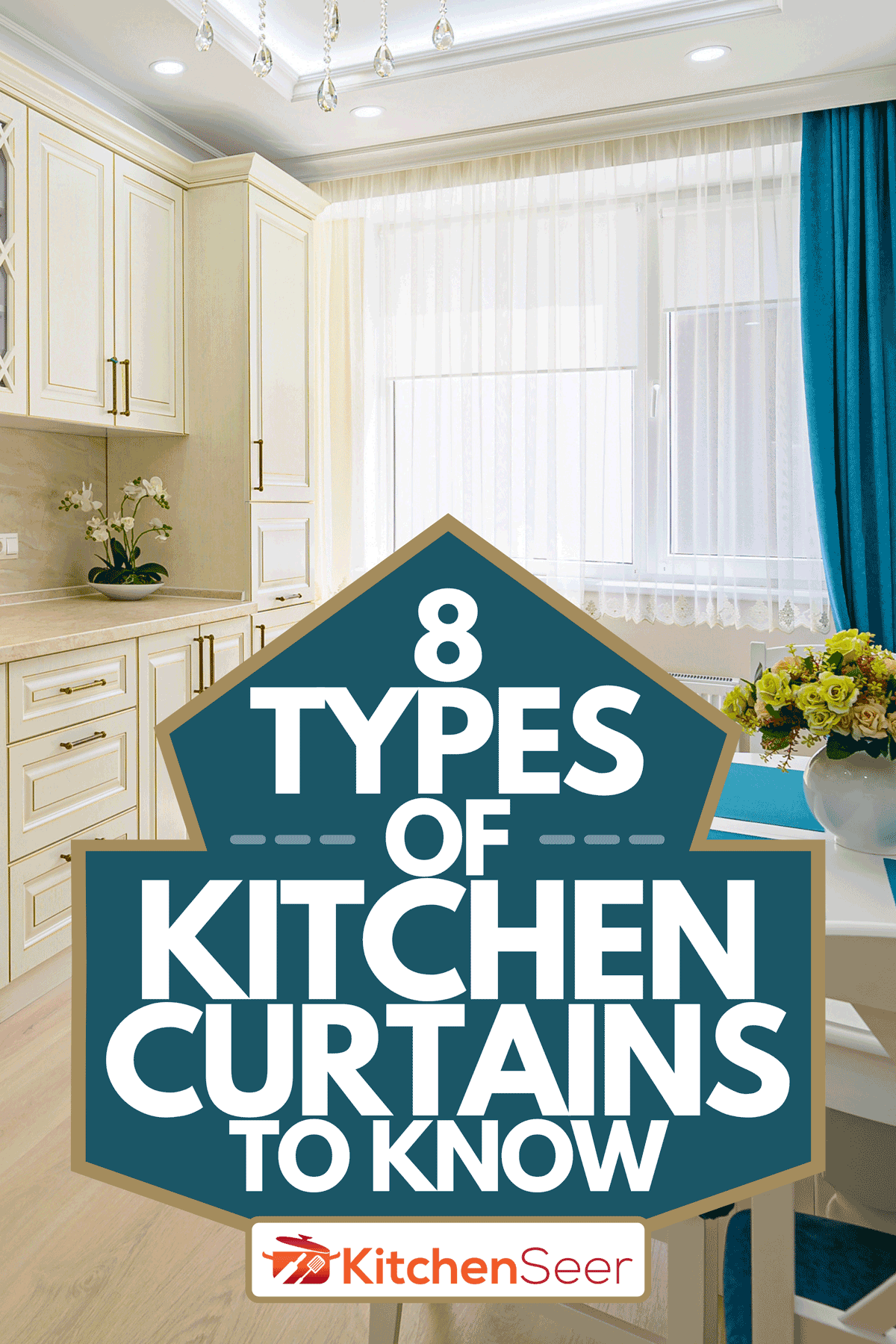
1. Cornices
A cornice is a three-dimensional fabric structure that hangs at the top of the window. It provides a pop of color, texture, and dimension to the window area in your kitchen.
Cornices are always paired with longer window coverings such as drapes or blinds; their main function is to camouflage the hardware on which the drapes or blinds are mounted. Cornices go best with formal, sophisticated kitchen design, from Victorian to contemporary.
2. Valances
A valance is a short drapery that spans the full width of the window but hangs down only 6" to 12" from the top. Like a cornice, a valance conceals the hardware supporting other window coverings. However, it is two-dimensional and hangs freely at the top of the window, without the stiff substructure found in a cornice. This makes a valance much more versatile and less formal than a cornice.
A valance can be used by itself to add color, texture, and style to your kitchen. However, if you'd like your window coverings to provide privacy, block the sun's rays, or control the ambient light in the kitchen, you should use your valance in combination with curtains or blinds.
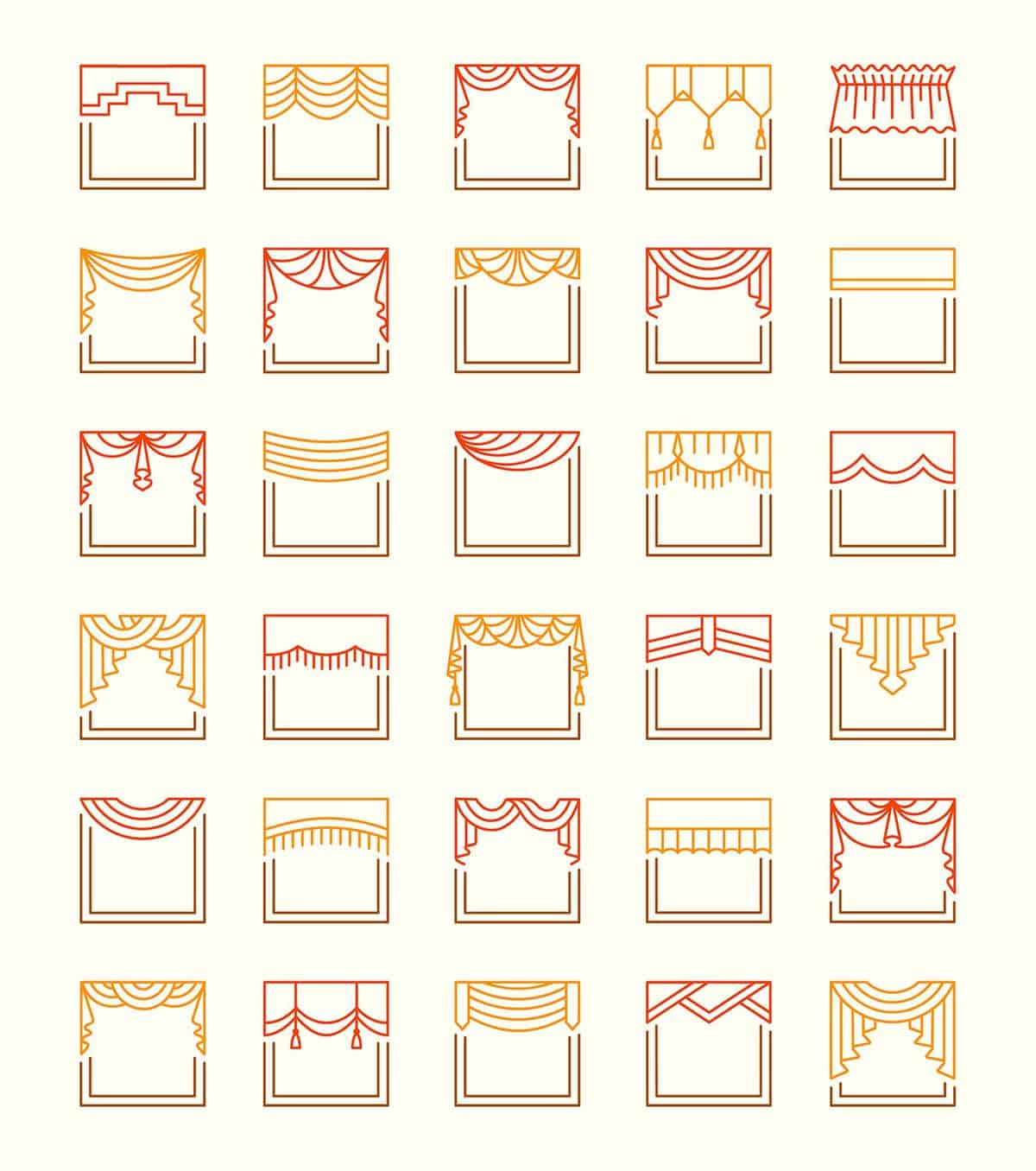
As illustrated above, there are many varieties of valances. We'll describe the four most popular types:
Balloon/Pouf Valance
Balloon valances are ruched on top, giving them a puffy appearance. They are usually constructed of cotton, linen, or other natural fibers. Balloon valances often complement sheer curtains, but their three-dimensional appearance adds enough visual interest for them to stand alone, as well.
Dark colors and heavy fabrics make balloon valances suitable for formal decor; lighter fabrics and bright colors add a modern, casual look to your kitchen.
Box Pleat Valance
The box pleat valance, with its straight bottom edge and vertical pleats; it's a classical and formal ambiance. Typically constructed of heavy, patterned fabrics, a box pleat valance provides a visual complement to solid-color curtains. While they have traditionally been used in classic homes, box pleat valances are making a comeback in contemporary upscale homes, as well.
Scalloped Valance
The scalloped valance features a wavy bottom edge, often with decorative tassels attached. Its curves break up the straight lines typical in a kitchen. Scalloped valances range in style from formal to casual to whimsical, so you can pair them with essentially any kitchen style.
Swag Valance
Another versatile and highly popular option is the swag valance, which features a draped center and a long tail on each side. Swag valances typically hang on their own or with a half-window cafe curtain (which we'll discuss below). They make excellent additions to a wide variety of kitchen styles, from formal to contemporary casual.
3. Cafe Curtains
Each cafe curtain has two panels, which hang from a rod inserted at the tops of the panels. Cafe curtains are typically made of lightweight, breezy fabrics such as cotton or linen. They may cover the full kitchen window or just the bottom half. Cafe curtains come in many colors and styles, and they add the casual charm of a roadside cafe to your kitchen.
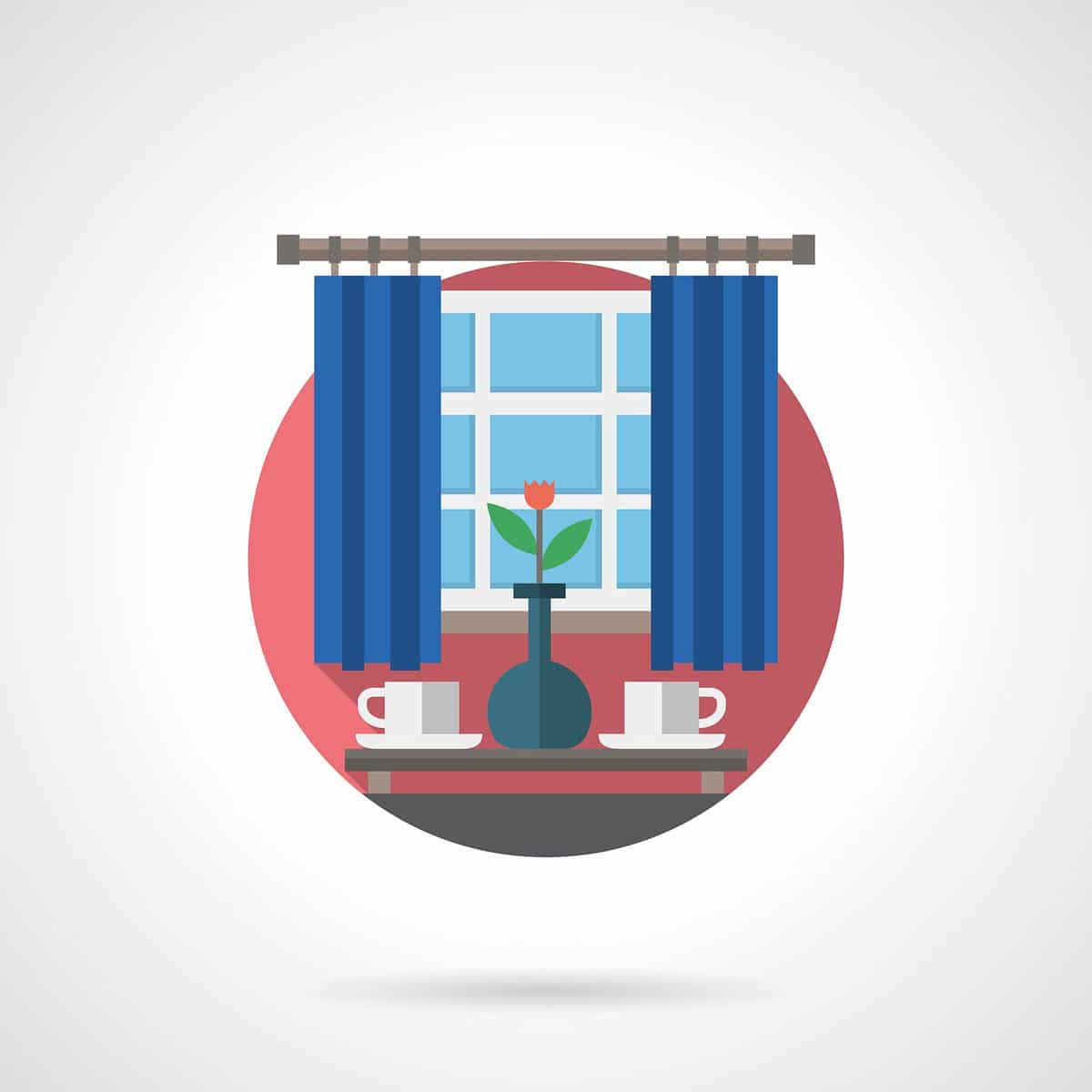
Full-Window Cafe Curtains
Full-length cafe curtains cover the window from top to bottom and sometimes go all the way to the floor. They provide privacy during the daytime when fully drawn. They also allow you to control the amount of natural light in the kitchen, as you can open them partway or all the way or keep them closed.
Because cafe curtains are typically constructed of lightweight and light-colored fabrics, they're not particularly effective at providing privacy at night. And, while they can block the sun's RV rays from entering your kitchen, they don't have the same insulative effect that some other types of window coverings do.
Half-Window Cafe Curtains
Half-window cafe curtains cover just the bottom half of the window. They allow substantial natural light to enter the kitchen through the top half of the window while still providing daytime privacy. However, they do not have a major sun-blocking or insulating effect. Half-window cafe curtains go best with casual chic or farmhouse decor.
4. Sheer Curtains
Sheer curtains hang from above the window to its bottom or all the way down to the floor. They are lightweight and gauzy, allowing light to filter through them while still providing a small measure of privacy and sunblocking.
Sheer curtains can hang by themselves, but they are usually used over mini-blinds or under heavier drapes. Although they typically come in white, you can find sheer curtains in almost any color.
In the kitchen, a sheer curtain can soften the harsh lines of countertops and appliances. Be careful where you place them, though. Because they are long and gauzy, they can easily blow into contact with your stove or other hot spots in the kitchen, causing a fire hazard.
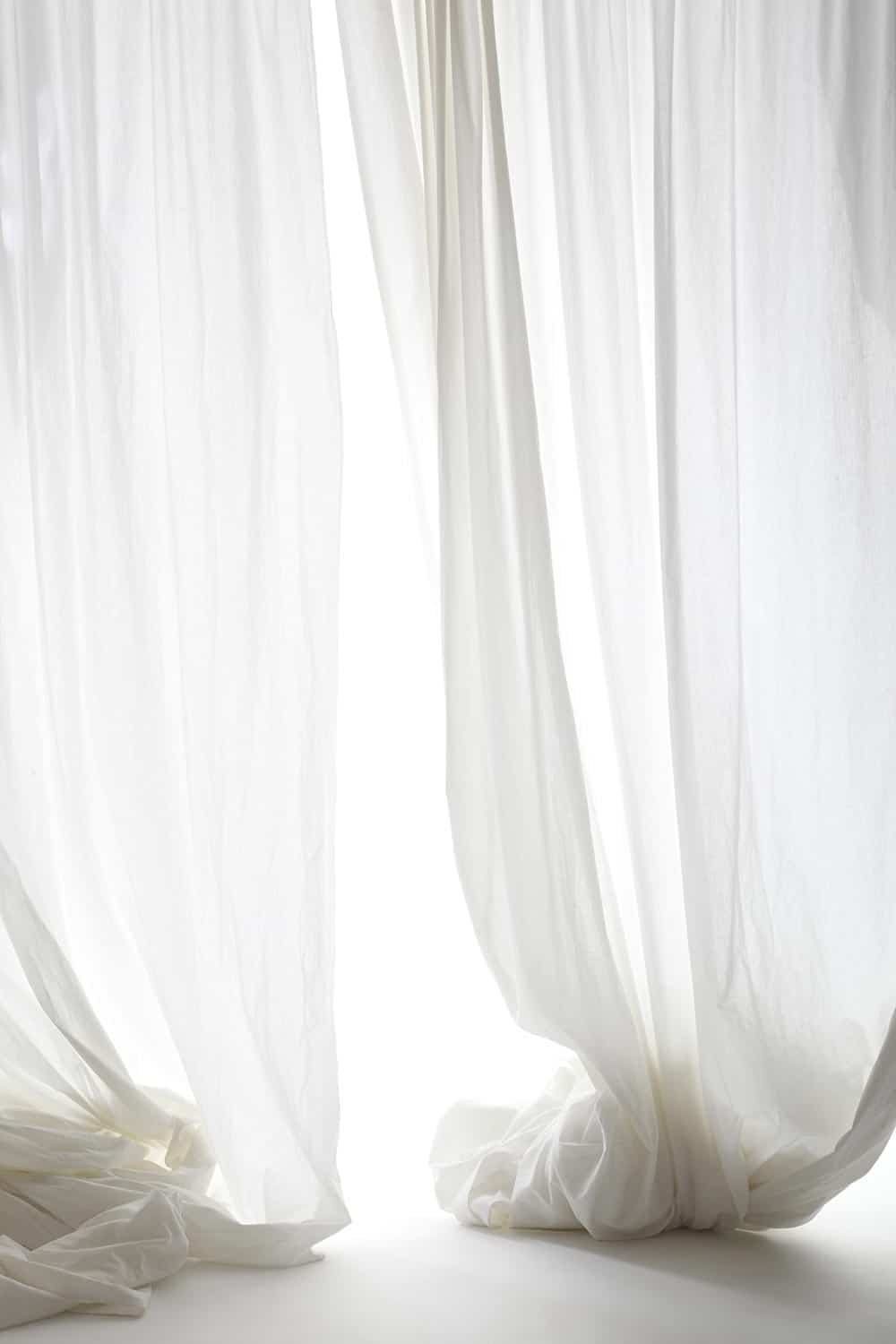
5. Panel Curtains
Panel curtains are similar to sheer curtains and full-window cafe curtains in that they consist of two panels that hang from a rod at the top of the window. However, panel curtains are made of a heavier fabric than sheer or cafe curtains, making them better at blocking sunlight and heat from entering the kitchen. Many panel curtains are lined, which adds to their insulative properties.
You can control the natural light in your kitchen by opening your panel curtains wide or keeping them partly closed. If you prefer blackout conditions for complete privacy, close the curtains entirely. Panel curtains come in a wide variety of fabrics, patterns, and colors. They are versatile and complement any decor and kitchen style.
6. Blinds
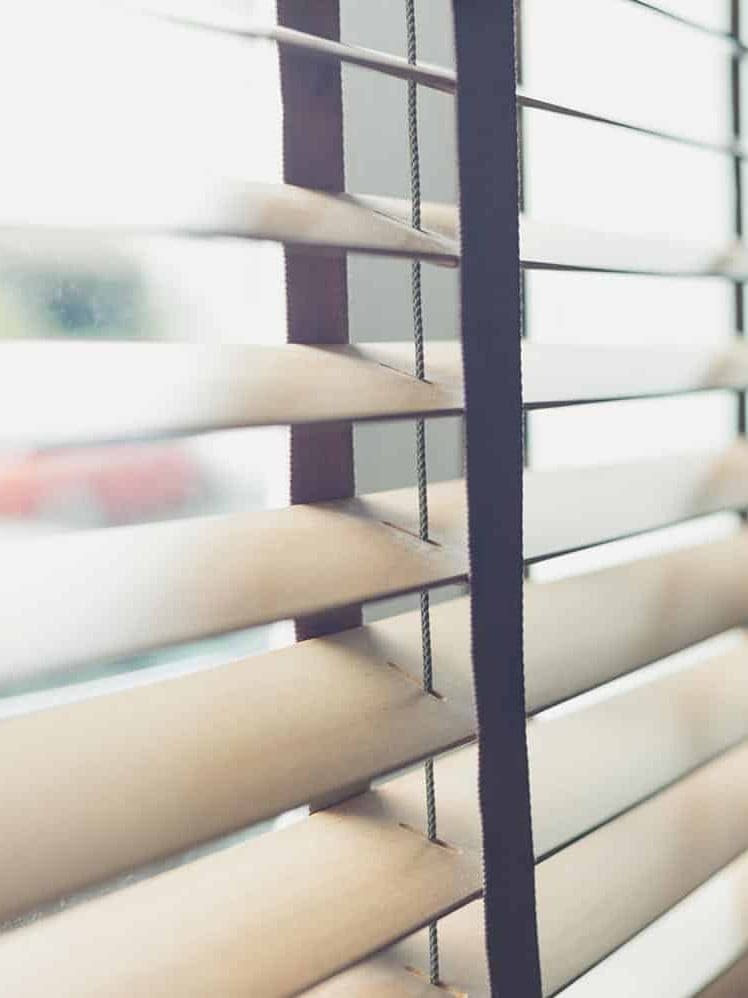
Unlike curtains, blinds do not consist of fabric panels; rather, they are constructed with horizontal slats of wood, metal, or vinyl held together by a system of cords and pulleys. You can open and close the entire blind by pulling a thick cord on the right-hand side of the unit. Or, you can change the angle of the slats by turning a rod that hangs down the opposite side of the blind.
If you keep them closed during peak sun hours, blinds are highly effective at keeping UV rays and the sun's heat out of your kitchen. They can also help you control the amount of ambient light in the kitchen, and they provide privacy. Because blinds are popular with homeowners of all income levels, they come in a range of qualities. Look carefully, and select the one that provides the best quality you can afford.
7. Shades
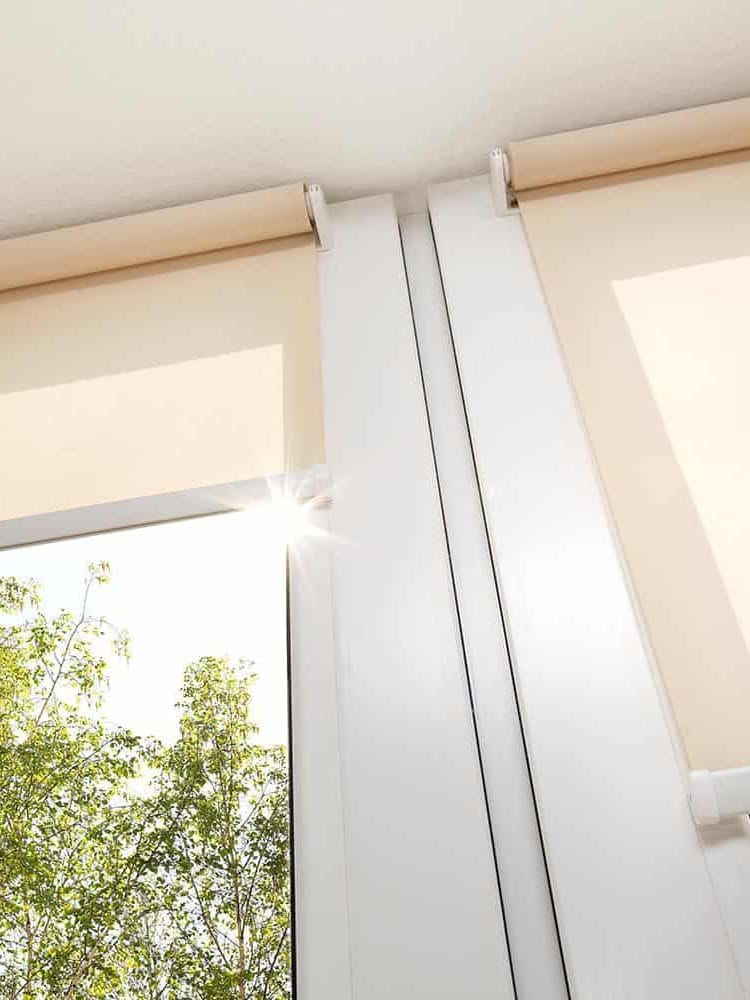
Shades, like blinds, fold up from the bottom of the window to the top; however, shades consist of solid material rather than separate horizontal slats. Shades are constructed of fabric, vinyl, paper, or wood. They come in a wide variety of styles and constructions, so they fit in with nearly any kitchen decor.
Shades provide privacy, control the amount of natural light in the room, and insulate against the sun's heat and UV rays. Below, we describe the four most popular shades for kitchen windows.
Cellular Shades
Cellular shades are a recent innovation, with an extra layer of insulation and sunblocking to help control the temperature in your kitchen. Constructed of pleated fabric or paper, they open and close by folding up and down like an accordion. When fully closed, they provide complete privacy and mute the natural light in the kitchen.
Cellular shades mount inside the window frame and feature invisible raising and lowering mechanisms, giving them a streamlined look and small footprint. They're perfect for small windows and tight spaces. Although they mostly come in white and off-white hues, you can find them in a wide variety of colors to match your decor. Cellular shades look best in contemporary style kitchens.
Roman Shades
Roman shades are constructed of fabric in many styles and colors. They feature an invisible system of rings, cords, and pulleys that allow the shades to open or close as horizontal sections move up and down. Like cellular shades, Roman shades are excellent for use in small spaces. Additionally, their simple, elegant lines and variety of patterns and textures give them an extra look of class and sophistication.
Solar Shades
Another recent innovation is the solar shade, specifically designed to filter out the sun's UV rays while still allowing light through. With a solar shade, you can protect your cabinets, floors, and countertops from fading and sun damage.
In addition, the shade allows you to see out through the window, while still providing you with some privacy. However, after dark, when your house lights are on, you may want curtains or shutters that you can close for privacy.
Woven Wood Shades
Shades made of woven wood -- bamboo, jute, reeds, or grasses -- soften the harsh angles of a kitchen and impart a natural feel. These shades work much like blinds, folding up and down by way of a system of cords and pulleys. They are excellent for controlling the ambient light and heat in your kitchen. Woven wood shades are also durable, stylish, and attractive. They look best in homes that have substantial additional wood accents to complement them.
8. Shutters
In plantation- and farmhouse-style homes, some kitchen windows feature louvered shutters. Made of wood, resin, or vinyl, these shutters allow you to block light and sun rays by opening and closing the louvers or by swinging the entire shutter away from the window. Shutters provide privacy, control of natural light, and some insulation from the sun's heat.
In Closing
Now that you know about all the options available for kitchen window treatments, you can better decide which one is best for you. Keeping in mind the style of your kitchen and your relative needs for privacy, light control, heat control, and UV dampening, you can select the perfect window treatments for your kitchen!
You may also enjoy the following posts:
Can A Pantry Have A Window? [With Tips On How To Light A Pantry]
Should Kitchen Cabinets Reach The Ceiling?















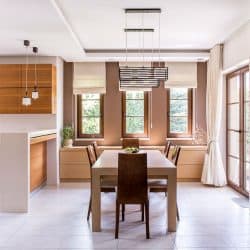
![A white inspired kitchen with white cabinets and white countertop with a window decorated with flowers and floral designed curtains, Kitchen Curtains Above The Sink [11 Gorgeous Ideas]](https://kitchenseer.com/wp-content/uploads/2021/12/A-white-inspired-kitchen-with-white-cabinets-and-white-countertop-with-a-window-decorated-with-flowers-and-floral-desgined-curtains-250x250.jpg)
